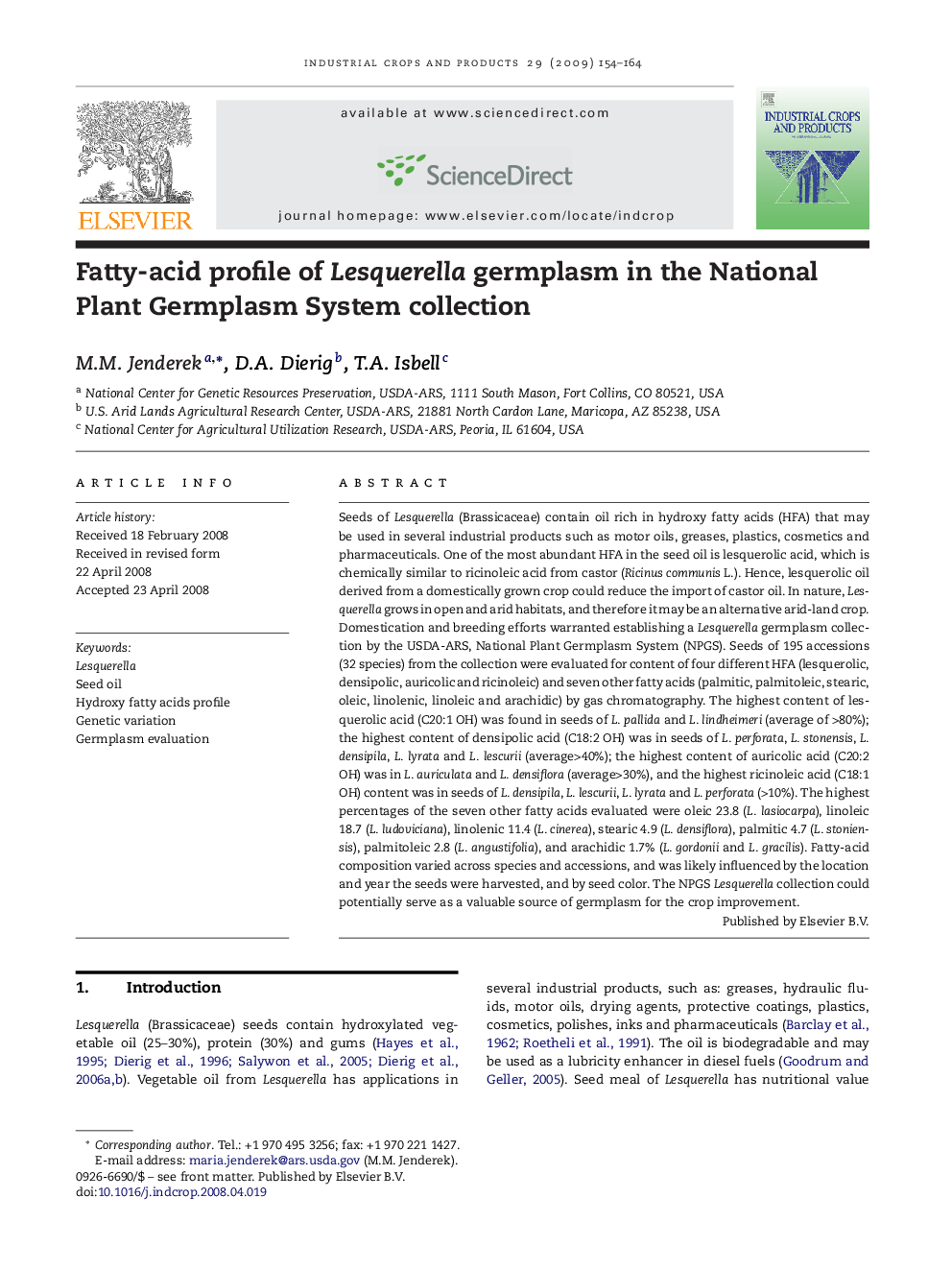| کد مقاله | کد نشریه | سال انتشار | مقاله انگلیسی | نسخه تمام متن |
|---|---|---|---|---|
| 4515179 | 1322232 | 2009 | 11 صفحه PDF | دانلود رایگان |

Seeds of Lesquerella (Brassicaceae) contain oil rich in hydroxy fatty acids (HFA) that may be used in several industrial products such as motor oils, greases, plastics, cosmetics and pharmaceuticals. One of the most abundant HFA in the seed oil is lesquerolic acid, which is chemically similar to ricinoleic acid from castor (Ricinus communis L.). Hence, lesquerolic oil derived from a domestically grown crop could reduce the import of castor oil. In nature, Lesquerella grows in open and arid habitats, and therefore it may be an alternative arid-land crop. Domestication and breeding efforts warranted establishing a Lesquerella germplasm collection by the USDA-ARS, National Plant Germplasm System (NPGS). Seeds of 195 accessions (32 species) from the collection were evaluated for content of four different HFA (lesquerolic, densipolic, auricolic and ricinoleic) and seven other fatty acids (palmitic, palmitoleic, stearic, oleic, linolenic, linoleic and arachidic) by gas chromatography. The highest content of lesquerolic acid (C20:1 OH) was found in seeds of L. pallida and L. lindheimeri (average of >80%); the highest content of densipolic acid (C18:2 OH) was in seeds of L. perforata, L. stonensis, L. densipila, L. lyrata and L. lescurii (average>40%); the highest content of auricolic acid (C20:2 OH) was in L. auriculata and L. densiflora (average>30%), and the highest ricinoleic acid (C18:1 OH) content was in seeds of L. densipila, L. lescurii, L. lyrata and L. perforata (>10%). The highest percentages of the seven other fatty acids evaluated were oleic 23.8 (L. lasiocarpa), linoleic 18.7 (L. ludoviciana), linolenic 11.4 (L. cinerea), stearic 4.9 (L. densiflora), palmitic 4.7 (L. stoniensis), palmitoleic 2.8 (L. angustifolia), and arachidic 1.7% (L. gordonii and L. gracilis). Fatty-acid composition varied across species and accessions, and was likely influenced by the location and year the seeds were harvested, and by seed color. The NPGS Lesquerella collection could potentially serve as a valuable source of germplasm for the crop improvement.
Journal: Industrial Crops and Products - Volume 29, Issue 1, January 2009, Pages 154–164